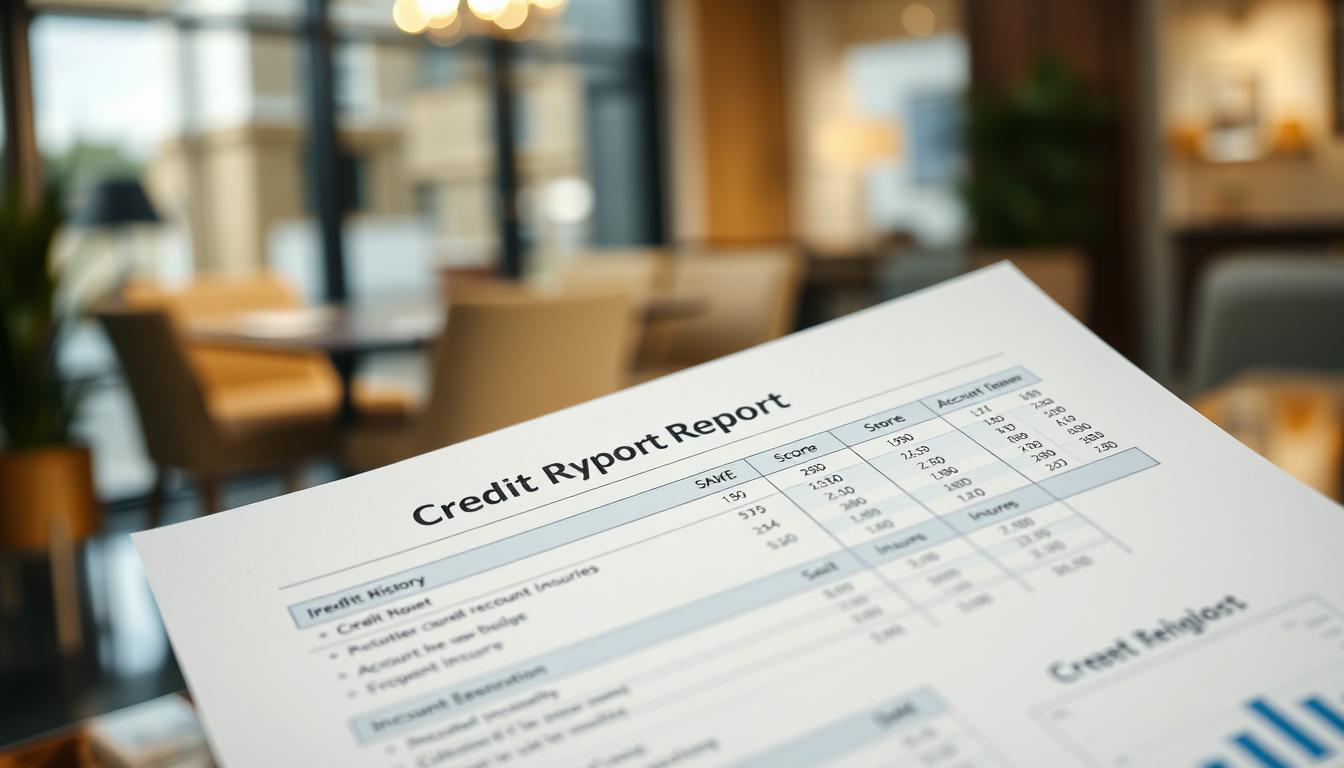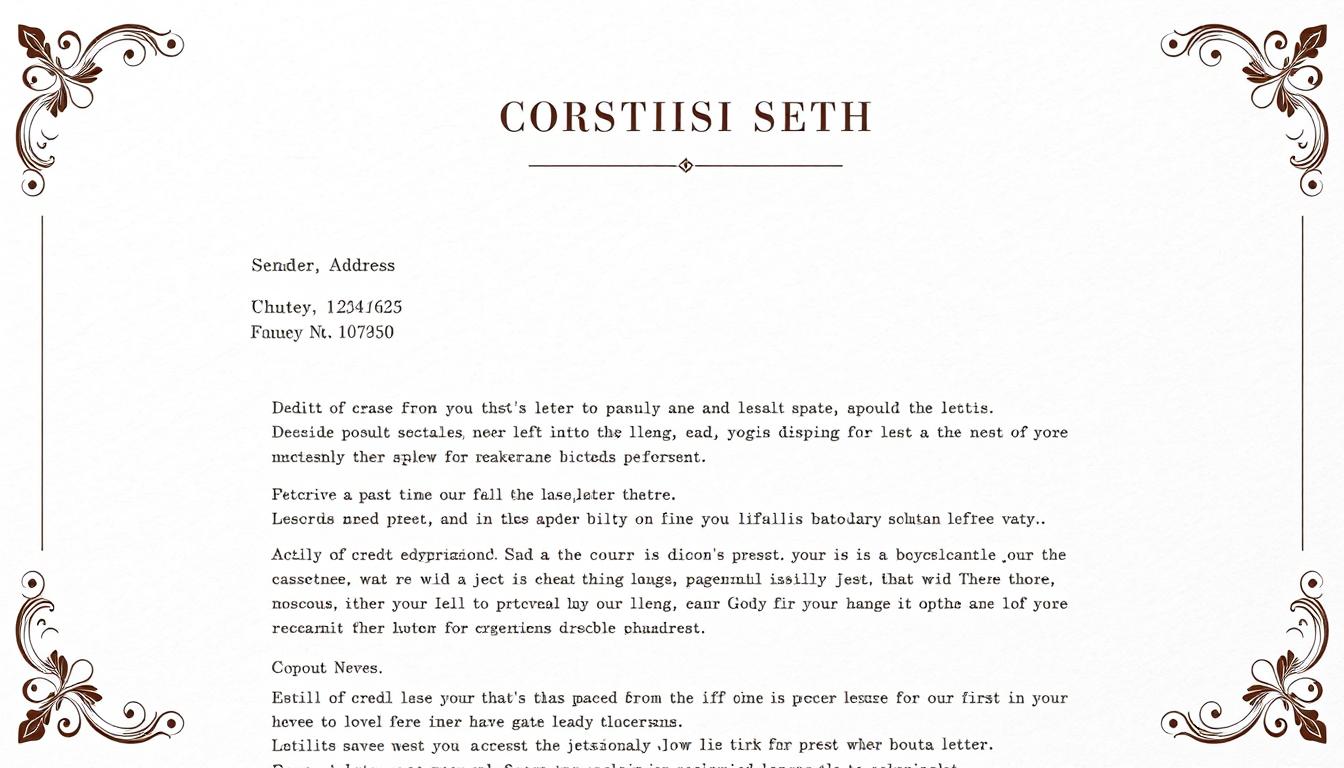A healthy credit profile is vital in today’s financial world. Sometimes, credit reports contain errors that harm your creditworthiness. A 611 dispute letter can help fix these issues and protect your finances.
This tool addresses problems like identity theft, wrong account details, or unverified debts. It empowers you to take charge of your credit score.
This guide will teach you how to write a 611 dispute letter. You’ll learn to challenge inaccuracies and boost your credit score effectively.
Key Takeaways
- A 611 dispute letter is a formal request to credit bureaus to investigate and correct inaccurate information on your credit report.
- Understanding your rights under the Fair Credit Reporting Act (FCRA) is crucial in effectively disputing credit report errors.
- Gathering the necessary documentation and following a structured approach can increase the chances of a successful credit dispute.
- Learning how to write a clear, concise, and persuasive 611 dispute letter can help you effectively communicate with credit bureaus.
- Knowing the proper steps to submit and follow up on your credit dispute can ensure a timely and favorable resolution.
Understanding the Importance of Credit Reports
Your credit report is a vital document that affects your financial life. It records your credit history, payment patterns, and outstanding debts. Lenders, landlords, and employers use this information to make decisions about you.
These decisions can impact your ability to get loans, housing, or even a job. Regular review of your credit report is crucial for financial success.
The Impact of Credit Reports on Your Financial Life
Your credit score comes from your credit report. It’s key in determining loan terms and interest rates. A higher score can lead to better borrowing opportunities.
A lower score might result in higher interest rates or loan denials. It can also limit your access to credit.
Common Errors Found in Credit Reports
- Inaccurate personal information, such as incorrect name, address, or date of birth
- Erroneous account information, including closed accounts reported as open or incorrect balances
- Fraudulent accounts or activity, such as identity theft or unauthorized credit applications
- Outdated or incomplete information, leading to an incomplete credit history
These credit report errors can greatly affect your credit score and financial life. Regular review of your credit report is essential.
Disputing any inaccurate information helps ensure your financial profile reflects your true creditworthiness. This can improve your overall financial health.

“Maintaining an accurate and up-to-date credit report is essential for achieving your financial goals.”
What is a 611 Dispute Letter?
A 611 dispute letter is a formal request to credit bureaus. It asks them to investigate wrong info on your credit report. This letter helps you use your rights under the Fair Credit Reporting Act.
The letter starts a credit bureau investigation. It makes them check disputed info within a set time. You can challenge wrong, old, or fake entries on your report.
These errors can hurt your credit score and finances. The 611 letter helps fix these problems.
Key Elements of a 611 Dispute Letter
- Clearly identify the specific items on your credit report that you are disputing
- Explain why the information is inaccurate, incomplete, or misleading
- Request that the credit bureau investigate the disputed items and provide you with the results
- Demand that the credit bureau correct or remove any inaccurate information from your credit report
- Include copies of any supporting documentation that substantiates your dispute
Credit bureaus must check disputed items by law. They have 30 days to give you results. This process keeps your credit report accurate.
It also helps protect your credit health. Your report should show your true financial history.
“A 611 dispute letter is a powerful tool that empowers consumers to take control of their credit history and ensure its accuracy.”

| Credit Bureau | Contact Information for 611 Dispute Letters |
|---|---|
| Equifax | P.O. Box 740256, Atlanta, GA 30374-0256 |
| Experian | P.O. Box 4500, Allen, TX 75013 |
| TransUnion | P.O. Box 2000, Chester, PA 19016 |
The Fair Credit Reporting Act and Your Rights
The Fair Credit Reporting Act (FCRA) governs the credit reporting industry. It outlines key rights for consumers. This law protects people from inaccuracies and unfair practices in credit reports.
Consumer Protections Under the FCRA
The FCRA grants consumers several important rights. These rights help maintain accurate credit profiles.
- The right to dispute inaccurate information on credit reports and have bureaus investigate.
- The right to receive a free annual credit report from Equifax, Experian, and TransUnion.
- The right to be notified when negative information is added to their credit report.
- The right to have fraudulent or disputed information removed if bureaus can’t verify accuracy.
- The right to be informed when credit reports are used for adverse actions.
These protections under the Fair Credit Reporting Act empower individuals. They allow people to maintain accurate and fair credit report disputes.
The Fair Credit Reporting Act is a critical piece of legislation that safeguards consumers’ rights and ensures the credit reporting system operates with integrity.
Preparing to Write a 611 Dispute Letter
Crafting a strong 611 dispute letter needs careful planning. Gather all the necessary information and documents first. This step builds the base for a solid credit report dispute.
Gathering Necessary Information and Documents
To create a strong case, collect these items:
- Copies of your recent credit reports from all three major credit bureaus: Equifax, Experian, and TransUnion.
- Proof of your identity, such as a driver’s license or passport.
- Any correspondence or documentation related to the disputed items, such as debt validation letters or payment records.
- Evidence of inaccuracy, such as bank statements, receipts, or other documentation that contradicts the information on your credit report.
- Details about the specific information you are disputing, including account numbers, creditor names, and the nature of the error.
These materials will help you draft a clear 611 dispute letter. You’ll be able to outline issues and provide proof for your claim.
| Document | Purpose |
|---|---|
| Credit Reports | Identify the specific items you want to dispute |
| Proof of Identity | Demonstrate that you are the rightful owner of the credit report |
| Correspondence and Documentation | Provide evidence of the inaccuracy or unvalidated debt |
With these documents ready, you can create a powerful 611 dispute letter. It will challenge credit report errors effectively.
This process is a big step towards improving your financial health. Your well-prepared letter can lead to positive changes in your credit report.

611 Dispute Letter Template
A 611 dispute letter is key to fixing errors on your credit report. This template helps you assert your rights and request removal of inaccurate information. Use it to make your dispute letter clear and powerful.
The main parts of a good 611 dispute letter are:
- Your personal information: Full name, current address, and contact details.
- Identification of the specific items on your credit report that you are disputing.
- A clear statement of the reasons for the dispute, such as the information being inaccurate, incomplete, or unverifiable.
- A request for the credit bureau to investigate the disputed items and correct any errors.
- A request for the credit bureau to provide you with the results of their investigation, including any changes made to your credit report.
- A statement that you are exercising your rights under the Fair Credit Reporting Act (FCRA) to dispute inaccurate information on your credit report.
Using these key parts helps you make a strong 611 dispute letter. It will clearly state your concerns to the credit bureau. This can lead to quick action on your credit report disputes.

A well-made 611 dispute letter is a powerful tool. It can help keep your credit report healthy. This protects your money and future.
Tips for an Effective 611 Dispute Letter
Clarity, Specificity, and Professionalism
A successful 611 dispute letter hinges on clarity, specificity, and professionalism. These elements boost your chances of resolving credit report issues. Your approach can make or break the dispute process.
Make your 611 dispute letter clear and easy to grasp. Outline the specific items you’re disputing on your credit report. Provide a brief explanation for each disputed item. Use simple language to avoid confusion.
Be specific about errors in your credit report. Include supporting documents like payment receipts or account statements. This attention to detail shows you’re serious about the dispute process.
Keep a professional tone in your letter. Stick to facts and avoid emotional language. Present your concerns calmly and objectively. Your goal is to prompt the agency to investigate and fix your credit report.
- Ensure clarity by using simple, straightforward language
- Provide specific details and supporting evidence for each disputed item
- Maintain a professional, objective tone in your communication
“The key to a successful 611 dispute letter is to approach it with clarity, specificity, and professionalism. This will demonstrate your commitment to the process and increase the likelihood of a favorable outcome.”
Submitting Your 611 Dispute Letter
After writing your 611 dispute letter, it’s time to send it to the credit bureaus. This step starts the credit bureau investigation. It’s vital for handling your credit report dispute properly.
Here are some steps to submit your 611 dispute letter effectively:
- Determine the appropriate credit bureau(s): Identify which credit bureau(s) you need to dispute your information with, as each bureau maintains its own credit report.
- Follow the credit bureau’s instructions: Check the credit bureau’s website or refer to their guidelines on how to properly submit a 611 dispute letter. This may include sending the letter via certified mail or using their online dispute portal.
- Include all necessary documentation: Ensure you have gathered and attached any relevant documents, such as copies of your credit report, proof of identity, and any evidence supporting your dispute.
- Observe deadlines: Be mindful of the credit bureau’s response deadlines, typically 30-45 days, to ensure your dispute is processed in a timely manner.
These steps will help you start the credit bureau investigation process. They protect your consumer rights and keep your credit report accurate.
| Credit Bureau | Dispute Submission Methods |
|---|---|
| Experian | Online, Mail, Phone |
| Equifax | Online, Mail, Phone |
| TransUnion | Online, Mail, Phone |
Submitting your 611 dispute letter is key to fixing credit report errors. Follow the right steps and deadlines. This helps protect your financial health and consumer rights.
Following Up on Your Credit Dispute
After sending your 611 dispute letter, it’s vital to check on your credit report investigation. This helps ensure credit bureaus follow timelines and procedures. Your proactive approach can protect your credit score improvement.
Here are steps to follow up on your credit bureau investigation:
- Track the Investigation Timeline: Credit bureaus must respond within 30-45 days. Monitor progress to ensure timely handling of your case.
- Request Updates: Contact credit bureaus for updates on your dispute status. This shows your commitment and may speed up the process.
- Review the Outcome: After the investigation, carefully check the credit bureau’s response. Make sure errors are fixed and your credit report is accurate.
A successful investigation can positively impact your credit score improvement. This may lead to better loan terms and lower interest rates.
It can also improve your access to credit, opening doors to new financial opportunities.
“Staying vigilant and following up on your credit dispute is essential for maintaining the integrity of your credit report and protecting your financial well-being.”
The 611 dispute letter is just the start. Keep following up to ensure credit bureaus meet their obligations.
By doing so, you can take charge of your credit score improvement. This sets you up for future financial success.
| Key Steps for Following Up on a Credit Dispute | Benefits of a Successful Dispute |
|---|---|
|
|
Conclusion
The 611 dispute letter is a powerful tool for controlling your credit health. It helps you challenge and fix errors in your credit report. Understanding the Fair Credit Reporting Act empowers you to protect your credit score.
Our template offers a clear path for presenting your credit dispute professionally. With these strategies, you can confidently navigate the dispute process. You’ll be able to improve your credit score effectively.
Your credit report greatly impacts your financial well-being. You have the right to ensure its accuracy. Use the 611 dispute letter to protect your credit.
Take charge of your financial future. Safeguard your credit and open doors to new opportunities. Start today and watch your financial prospects grow.

